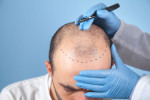Introduction
Facelift surgery can dramatically enhance your appearance. It reduces sagging, lifting facial muscles, and smoothing skin. However, the recovery process plays a key role in achieving the best results. By following expert facelift recovery tips, you can heal faster, reduce complications, and enjoy long-lasting improvements.
This guide shares ten essential strategies to make your recovery smooth and successful. Whether you're preparing for surgery or just completed it, these tips will help support a safe and comfortable healing process.
Facelift Recovery Tips:
1. Follow Your Surgeon’s Instructions Carefully
After your surgery, your surgeon will provide specific instructions tailored to your recovery. These may include advice on medication, wound care, and physical activity. It’s essential to follow every detail as closely as possible.
Additionally, attend all follow-up appointments. These visits help track progress and identify any early signs of infection or complications. Trust your surgeon’s experience. They understand the best way for your body to heal safely.
2. Keep Your Head Elevated
One of the most important facelift recovery tips is to sleep with your head elevated. Keeping your head above heart level reduces swelling and prevents fluid build-up in your face.
Use two to three pillows, or a wedge cushion, while resting. Avoid lying flat on your back or side, as pressure may impact healing. This position also reduces bruising and discomfort during the first few days.
3. Apply Cold Compresses Gently
Cold compresses are excellent for managing swelling and reducing discomfort. Apply cold packs to the treated areas for 15 minutes every few hours during the first 48 hours.
However, never place ice directly on your skin. Use a soft cloth or gauze as a barrier. Additionally, avoid pressing too hard, as your tissues will be sensitive. Gentle cooling encourages blood flow and reduces inflammation.
4. Avoid Strenuous Activity
Rest is essential during the first two weeks after surgery. Avoid all strenuous activities, including bending, lifting, and exercising.
Raising your blood pressure can increase swelling and risk of bleeding. Instead, take short walks around your home to promote circulation. After about three weeks, you may gradually reintroduce light activity—always check with your surgeon first.

5. Stay Hydrated and Eat Nutritious Foods
Proper nutrition supports your body’s ability to heal. Drink plenty of water throughout the day and eat nutrient-rich meals.
Focus on soft, easy-to-chew foods like soups, smoothies, and yoghurt during the early days. Include foods rich in vitamins A and C, zinc, and protein. These nutrients speed up tissue repair and reduce inflammation.
Additionally, avoid alcohol, caffeine, and salty foods during your recovery. These can dehydrate your body and slow healing.
6. Do Not Smoke or Use Nicotine Products
Avoiding nicotine is one of the most crucial facelift recovery tips. Smoking constricts blood vessels and reduces oxygen flow, which delays healing.
It also increases the risk of infection, scarring, and skin necrosis. If you smoke, stop at least two weeks before surgery and avoid all nicotine products for at least four weeks after.
Your surgeon may perform a nicotine test to ensure you’re committed to a safe recovery. This lifestyle change also benefits your long-term health and skin appearance.
7. Keep the Incision Sites Clean
Clean incision care helps prevent infection and promotes proper healing. Gently clean the area with a mild antiseptic or as directed by your surgeon.
Avoid using harsh skincare products, exfoliants, or strong cleansers during the first few weeks. Pat the area dry—never rub. Additionally, avoid soaking your face in water, such as in baths or pools, until fully healed.
Apply any prescribed ointments or dressings carefully. Keeping your wounds clean and dry is essential for optimal recovery.
8. Manage Swelling with Patience
Swelling is completely normal after a facelift and may last several weeks. It often peaks in the first few days, then gradually subsides.
To help manage swelling:
- Stay hydrated
- Avoid salty foods
- Keep your head elevated
- Wear compression garments if provided
Furthermore, avoid comparing your progress to others. Healing rates differ, and full results may take several months to appear. Patience is key to a successful outcome.
9. Avoid Direct Sun Exposure
Protecting your skin from the sun is one of the most overlooked facelift recovery tips. UV rays can damage healing skin, worsen scars, and delay recovery.
Stay indoors as much as possible during the first few weeks. If you must go outside, wear a wide-brimmed hat and high-SPF sunscreen. Continue sun protection even after healing to preserve your surgical results and prevent premature ageing.
10. Monitor Your Mental Wellbeing
Healing from surgery is not just physical—it’s emotional, too. Some people feel anxious or impatient during recovery. This is especially true when swelling, bruising, or temporary asymmetry affects appearance.
Talk to someone you trust, and remind yourself that healing takes time. Setting realistic expectations and focusing on progress rather than perfection helps you stay positive. Additionally, professional counselling may support your emotional wellbeing during recovery.
Attend All Follow-Up Appointments
One of the most essential yet often overlooked facelift recovery tips is attending all follow-up appointments. These visits allow your surgeon to monitor healing, identify early signs of complications, and ensure everything is progressing smoothly.
During these check-ups, your dressings may be changed, and stitches might be removed. Additionally, your surgeon will assess swelling, bruising, and scar development. If needed, they may adjust medications or offer further guidance on wound care and activity levels.
Follow-up visits also give you the chance to raise concerns or ask questions. Feeling unsure or anxious during recovery is natural. Having direct access to professional advice can ease these worries.
Moreover, regular check-ins help build a stronger relationship with your medical team. This connection ensures you receive personalised care throughout your healing process.
Missing appointments could delay recovery or increase the risk of avoidable complications. Therefore, keep your schedule clear, set reminders, and attend every follow-up without exception.
These sessions are vital not only for your physical recovery but also for your peace of mind.
Conclusion
To summarise, following these ten facelift recovery tips can make a significant difference to healing. By listening to your surgeon, protecting your skin, and adopting healthy habits, you improve both short-term comfort and long-term results. Recovery takes time. But with patience and care, you’ll enjoy a rejuvenated appearance that lasts for years. Every step you take towards proper healing supports a successful facelift journey.
For more information on facelift recovery and to book a consultation visit the ACIBADEM Beauty Center Face Lift webpage.
Frequently Asked Questions
Most patients return to work within two to three weeks, depending on swelling and job type.
Incisions are made in discreet areas. Scars fade over time and are usually not noticeable.
Initial swelling subsides in two weeks. However, subtle swelling may last up to three months.
Avoid makeup for at least ten days or until your surgeon confirms it’s safe to apply.
Final results may take three to six months to fully appear as swelling completely resolves.













